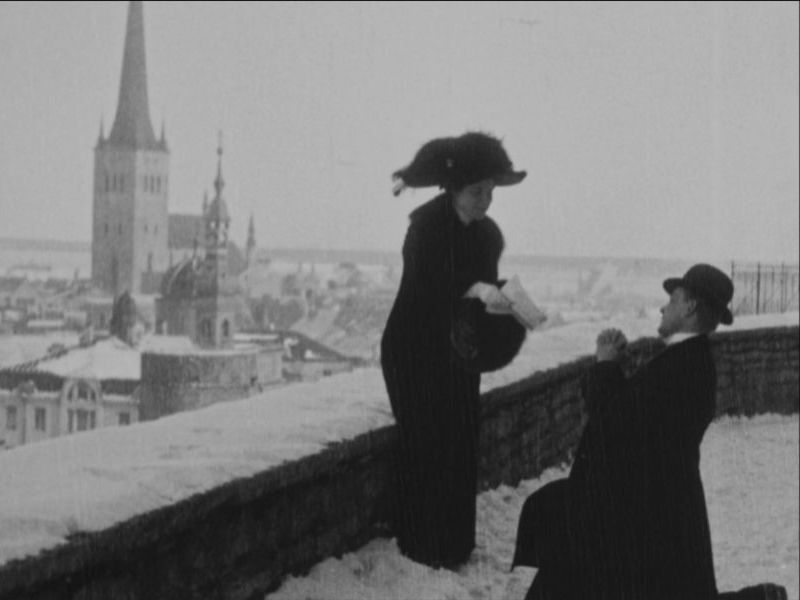LAENATUD NAENE
[The Borrowed Woman]
Evgenii Slavinskii? (Estonia, RU 1913)
In 2014, Peter Bagrov identified the first surviving fiction film shot in Estonia, Laenatud naene, a lost work previously overlooked in the Gosfilmofond archive thanks to a classic case of mislabelling: it had been given the generic title “Glupishkin” (Глупышкин), the name commonly given in Tsarist Russia to the Cretinetti character played by André Deed. Once that was determined, the film, lacking intertitles, was recognized as a superior comedy featuring a cast of well-known Estonian theatre actors, though it’s curious that none of the performers mention the movie in their memoirs. The plot can be briefly summarized: a young man asks for money from his rich uncle to support his imaginary family. When the uncle decides to visit, the nephew borrows a wife and children. Unexpectedly, his “wife” and uncle fall in love.
Much remains uncertain about the film’s production history. It’s known that Laenatud naene is based on a one-act play of the same name, translated into Estonian in 1908 by Mihkel Aitsam, but the original source material, conjectured to be either German or Swedish, has yet to be identified. While the film was released in May 1913 in Reval (rechristened Tallinn after independence in 1918), one scene pushes the actual shooting date back to 1911, as the site of a power plant whose construction began in January 1912 is empty. Though this likely makes it the first narrative film shot in Estonia, it appears the filmmakers were not Estonian. Film historian Veste Paas identified the production company as the Riga-based First Baltic Film Studio, owned by the Ukrainian entrepreneur Semjon Mintus, whose output appears largely to consist of Jewish-themed films such as Where Is the Truth? The Tragedy of a Jewish Student (1913), shot in Latvia. Given that Mintus’ usual cameraman was Evgenii Slavinskii, it’s reasonable to hypothesize that Slavinskii, like many camera operators of the time, can also be credited as director.
Slavinskii (1877-1950) shot his first film sometime after 1901, while a medical assistant on the Russian naval icebreaker the Yermak. From 1908 he worked for the Moscow branch of Pathé making newsreels and travelogues in Reval and throughout the north-western region of the Russian Empire. By 1911 he was in Warsaw, in charge of making films for Mintus with a travelling troupe of Jewish performers (Wedding Day, 1912, is a fortunate survivor); in his recollections, he stated that these were collective efforts, which may be the case as well for Laenatud naene. Within a few years, Slavinskii entered the Yermoliev studio, collaborating with Jakov Protazanov and Alexandre Volkoff, among others; in later years he worked for Mosfilm.
Maria Mang


regia/dir, photog: Evgenii Slavinskii?.
cast: Paul Pinna (lo zio/Uncle), Betty Kuuskmann (la moglie/Wife), August Kuuskmann [Kuuskemaa] (il nipote/Nephew), Alfred Sällik (il domestico/Servant).
prod: Semjon Mintus, First Baltic Film Studio.
uscita/rel: 28.05.1913 (Reval [Tallinn]); 07.12.1913 (Cinema Imperial, Tartu).
copia/copy: 35mm, 359 m., 17’33” (18 fps); did./titles: EST.
fonte/source: Eesti Rahvusarhiivi Filmiarhiivi, Tallinn.




